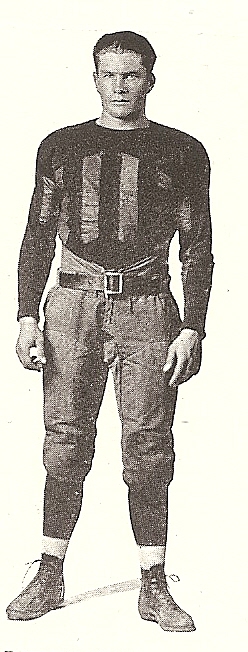
Competition and controversy were different words with different meanings, but they blurred in the far-flung Coast League, whose fratricidal members regularly accused their brethren of academic or residential mischief.
San Diego High was on the receiving end of a far-out allegation that threatened to stop one of the best teams in school history.
Senior Captain Russ Saunders, the 5-foot, 9-inch, 190-pound blocking quarterback and linebacking defender, faced a charge of accepting money three years before in a boxing match that would have made Saunders a professional and ineligible for interscholastic sports.
If the curiously-timed indictment proved accurate, the Hilltoppers would be forced to forfeit nine victories and the opportunity to compete in the Southern California playoffs.
Saunders eventually was absolved of wrong doing, but not before a dizzying chain of events that took on the aura of a Saturday morning movie serial.
CIF CHASING RABBITS
The intramural dustup was typical of the Prohibition-era, anything-goes Roaring Twenties, a decade when the growing CIF and its commissioner, former Escondido coach Seth Van Patten, struggled to keep order.
The CIF’s rule on age limitation was only that you couldn’t play if you were 21 years old, but that meant that post-graduates and assorted roughnecks still populated the prep scene.
Coast League rivals didn’t trust each other.
Trouble began in the final regular-season game, when Bert Ritchey ran 62 yards for a touchdown that would propel the Hilltoppers to a 9-0 victory over the Santa Ana Saints in a battle of teams with 6-0 league records.
The victory, before a record City Stadium high school crowd of more than12,000, clinched a second straight loop championship for coach John Perry’s squad.
With a long ride home Saturday night and all day Sunday to chew on the loss, officials from the Northern school prepared to make a call on Monday morning and notify Coast League president and CIF playoff coordinator Harry J. Moore that they were protesting.
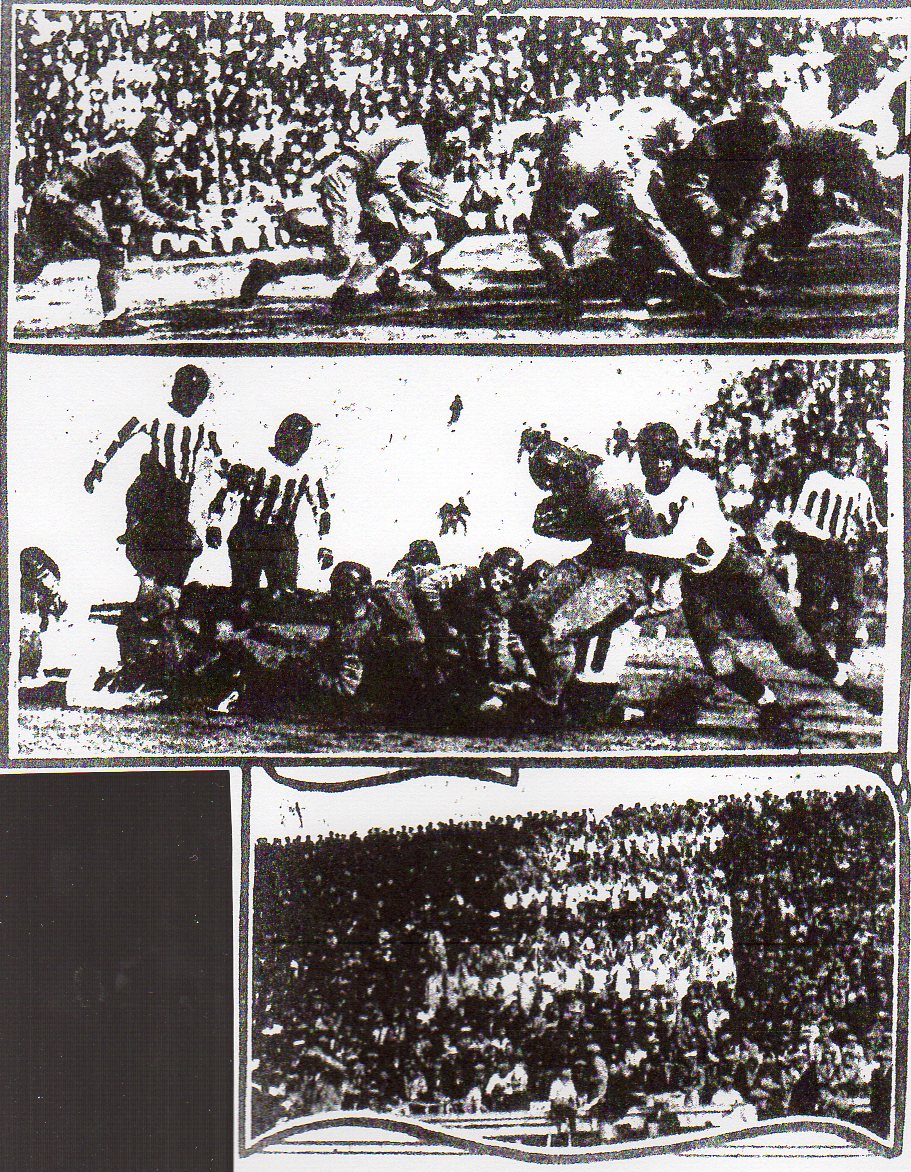
IT WAS OUR FANS, SAY SAINTS
The complaint did not originate with us, Saints officials told Moore, but had come from three Saints fans who were said to have previously resided in Coachella and who recognized Saunders as having participated in the desert community smoker on July 11, 1922.
The Santa Ana Three, apparently so vested emotionally with the Saints’ fortunes, supposedly had returned to Coachella, and was able to produce tickets that announced the main event as being between Saunders and Herbert Miller, plus a statement from Miller’s manager.
Manager D.H. Metzler testified his boxer received $40 and that Metzler and Miller “understood” Saunders, whose family resided in Coachella at that time, to have received $25, even though professional boxing was barred in California in 1922.
The muscular Saunders, who was no more than 15 or 16 at the time of the fight, told San Diego reporters that the townspeople of the Coachella Valley “built the boys a fight arena.”
Saunders said the match was promoted to help pay back the people that built the arena, and that he had received no money and was not aware of the fact Miller had received money.
HILLTOPPERS’ RIDICULOUS DEADLINE
With stunning eagerness, Coast League bosses convened Tuesday at league headquarters in Whittier and, after hearing the charge, informed San Diego officials they would have until 4 p.m. Wednesday to respond.
Perry and vice principal Edgar Anderson, who attended the meeting at Whittier High, returned to San Diego about midnight. The Hilltoppers would have to launch their own investigation and be at another meeting in Whittier in 16 hours.
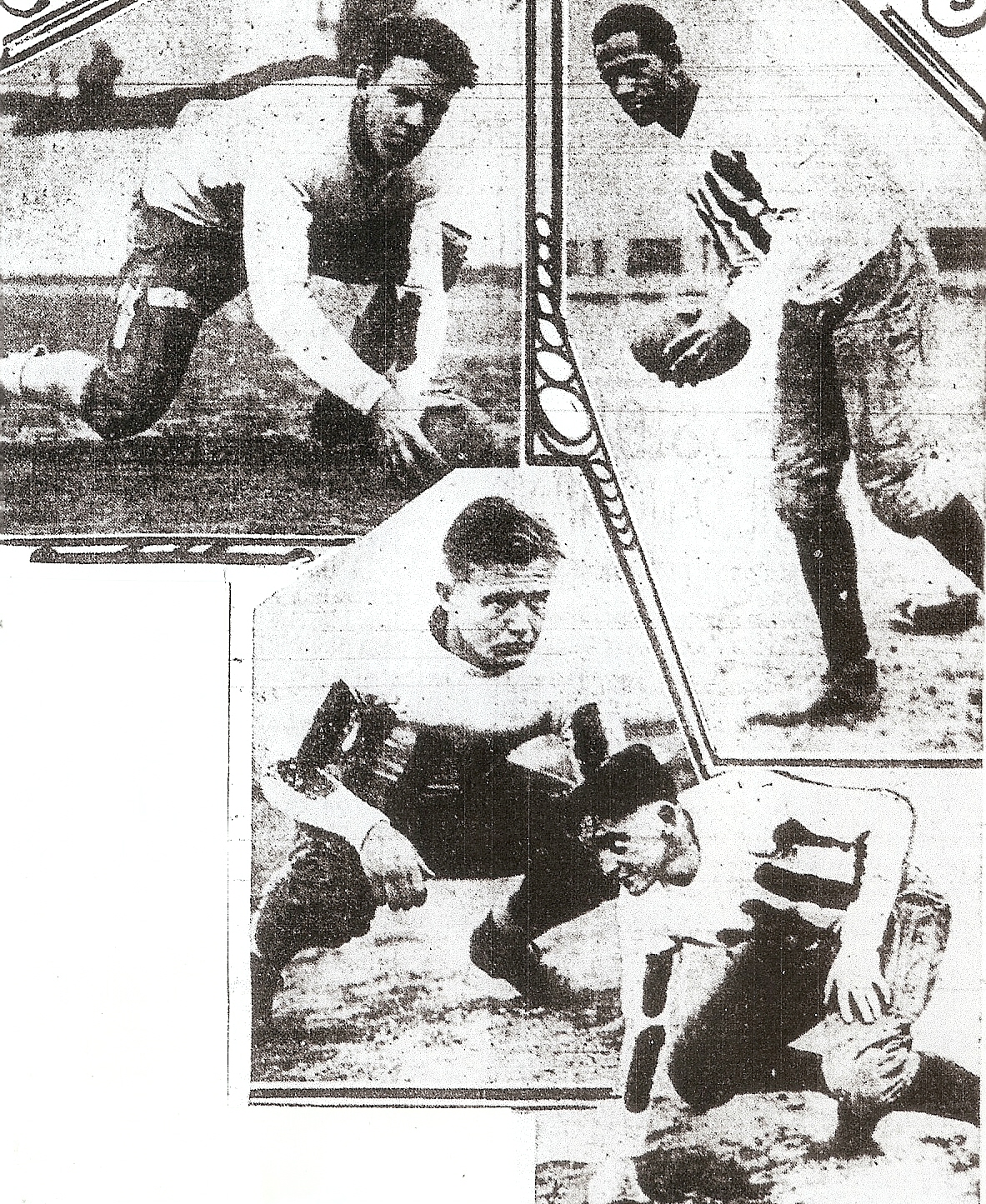
The playoffs would begin Saturday, with Fullerton a first-round opponent for San Diego or Santa Ana.
Facing the stunningly narrow time frame, Hilltop officials swung into action.
Principal Glenn Perkins and James Saunders, the player’s father, chartered a small plane, piloted by Henry Ryan of the Ryan Flying Company.
“The tale of the trip to Coachella is an epic,” declared a front-page story in The San Diego Union.
FIRST HEMET, THEN INDIO…
Buffeted by winds, Ryan struggled to get the plane’s altitude above 3,000 feet, over clouds and mountains.
“After flying almost two hours, working continuously to get around clouds, Ryan was forced to drop several thousand feet through a hole in the clouds to get his bearings (and make) a landing at Hemet,” the article continued.
After refueling, the party traveled on to Indio, stopping again for gas and directions.
Friends in Coachella, apprised of the situation Wednesday morning, were waiting and prepared to assist the San Diego contingent.
Perkins, armed with affidavits in support of Saunders from the former commandant of the sponsoring American Legion post in Coachella, gave Ryan the signal to take off for Whittier at 2 p.m.
Meanwhile at Whittier High, San Diego High officials on site, including Russ Saunders, watched the sky for the sight of an airplane. They finally spotted one that passed over and headed Northwest.
The travelers set down again at 3:40 p.m. at the nearest landing field in Montebello, six miles from the meeting site, with only minutes to spare.
“Sloshing through the mud of an open field to a nearby highway, Perkins and James Saunders flagged down a passing motorist, and, with the aid of a five-dollar bill, purchased a mad cap ride to Whittier,” wrote Don King in Cavers Conquest, the athletic history of San Diego High.
Perkins presented Coast League principals with the information that proved the fight was a charity event, with neither fighter receiving money. Saunders was cleared and San Diego continued to get ready for Fullerton.
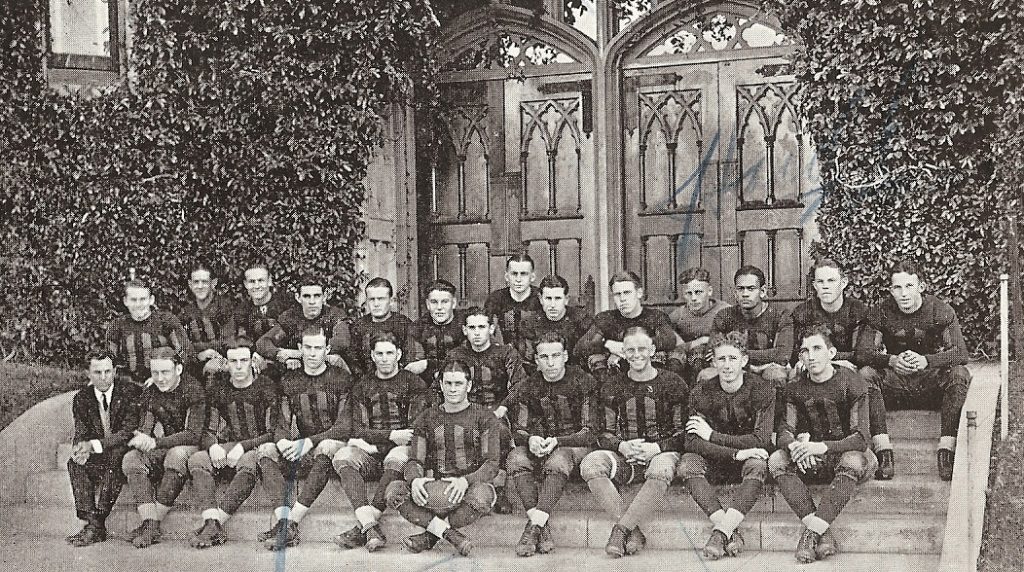
Newspapermen were told by Harry Moore that the vote in the hectic meeting, attended and hotly contested by lawyers from both sides, was a unanimous, 8-0 to absolve Saunders.
Santa Ana honcho W.M. Clayton emphatically denied Moore’s statement. Clayton said he had voted against Saunders, making the tally 7-1, according to the Los Angeles Times.
RITCHEY NURSES INJURY
The Cavers defeated Fullerton, which hadn’t been scored on all season,14-6, but Bert Ritchey, who had scored 26 touchdowns in eight games (Perry had held Ritchey out of game 9, a 33-0 victory at South Pasadena) was used sparingly against the visitors.
Ritchey had been playing with a sore knee and it threatened to keep him out of what now was a playoff season of only two games.
Covina was next up in the Los Angeles Memorial Coliseum in the championship contest, but Perry figured the Hilltoppers would have a bye after Fullerton and not have to play for two weeks, until Dec. 19.
PLAYOFF SWITCH
Chicanery was not limited to the Coast League.
Instead of playing Covina in the Los Angeles Coliseum on Dec. 19, San Diego was informed that the title contest would be played on Dec. 12 at Covina, where temporary bleachers were being constructed to accommodate a crowd of more than 4,000.
Wrote a Los Angeles Times reporter: “In a more or less bad frame of mind over alleged poor treatment in the matter of transfer of the game from the Coliseum to Covina, the San Diego High team was prepared to leave today for Covina.
“It wasn’t the change of venue that rankled the Hilltops so much, however, as it was the switch in date,” wrote the Times correspondent. “The tilt was originally scheduled for December 19 but through deep and dark channels was suddenly moved up to December 12, tomorrow, and the field switched to Covina.”
Playoff coordinator Harry Moore said that Covina was being afforded the home game because the Colts already had played three playoff contests on the road.
Al Penrose, in The San Diego Sun, hinted of a setup and blasted Moore for the suspicious switch. Covina was going to the expense of creating bleachers for a 4,000 crowd and, Penrose wrote, “Neither team will make hardly more than expense money.”
With virtually no participation by Ritchey, the Hilltoppers manned up, twice stopping the Colts inside their three-yard line, but Covina had 18 first downs to 8 and the rushing thrusts of halfbacks Sleepy Don Rieke and Earl Needham continually kept the visitors on their heels.
Covina led, 13-0, in the fourth quarter before San Diego scored a late touchdown to make the final count 13-6. Covina, which twice was rebuffed at the Hilltoppers’ one-yard line, had outplayed the Cavemen.
It was a sour finish for Perry’s squad and the bitterness lingered.
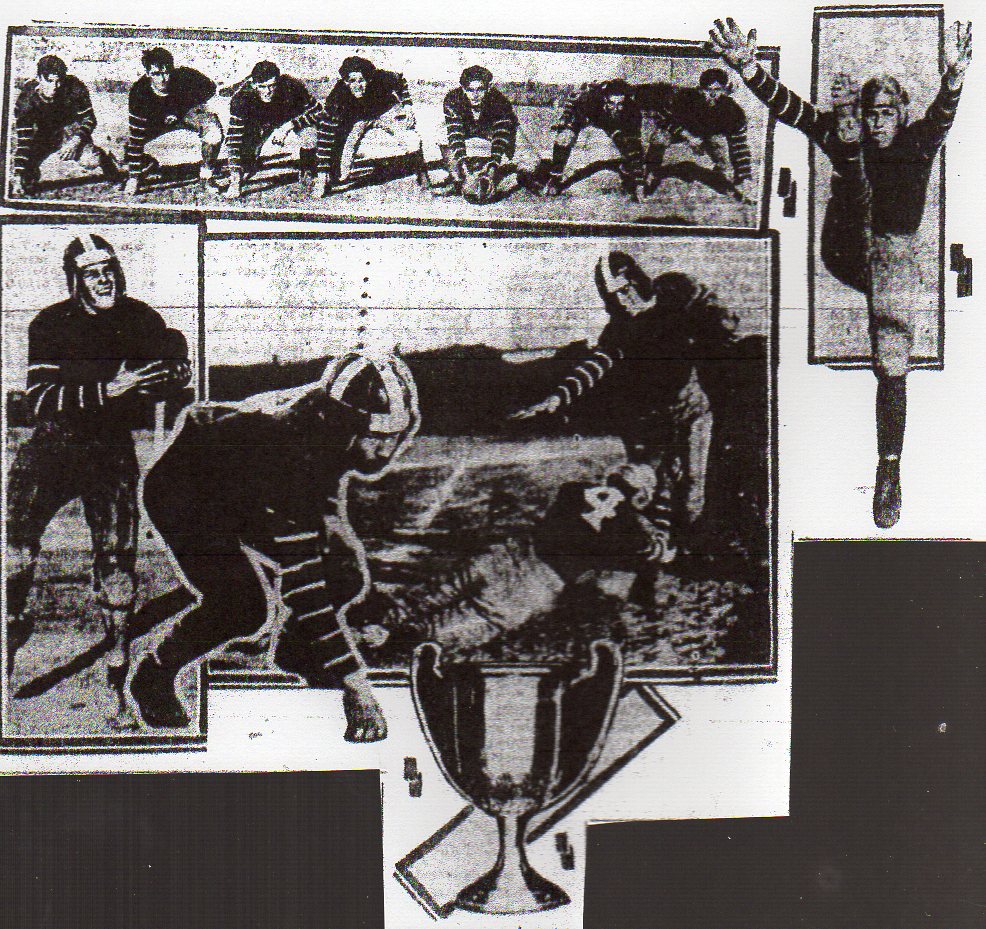
COVINA’S CHIEF
Wallace (Chief) Newman, a native American and former USC player, was hired by Covina this year after coaching successful teams at the Sherman Institute for Indians in Riverside.
There were rumors that at least three over-age-limit native American players from the Sherman Institute resided at Newman’s home and played against the Hilltoppers.
Another report was that Covina reportedly refused a CIF order to forfeit the title and ship the winners’ trophy to San Diego.
With all of the drama, San Diego did well to go as far as it did.
GROSSMONT IN PLAYOFFS
Coach Ladimir (Jack) Mashin was building a strong program at Grossmont.
The Foothillers were 4-5 and 5-2-1 in Mashin’s first two seasons and swept to the County League title and a 7-0 record this year, earning a berth in the playoffs.
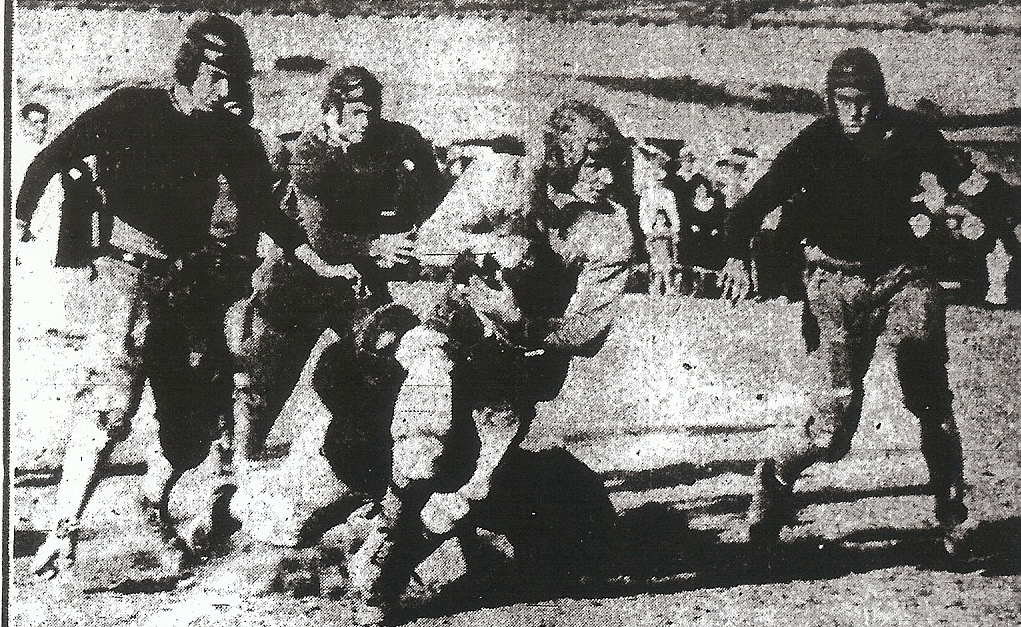
Fullerton dispatched Grossmont, 34-0, but the Foothillers didn’t conclude the season with a loss. Mashin made a deal with the Yuma High Criminals of Arizona agreeing to come over the Laguna Mountains for a season-ender.
Grossmont won, 20-0.
PLAYOFF CRAZINESS
There seemed madness to the method of the playoffs, from which the CIF received much of its revenue and which the governing body often had difficulty filling out brackets.
Some schools just weren’t interested.
Fullerton’s loss to San Diego marked the Indians’ third consecutive week in the postseason. The Indians played Grossmont on Nov. 19, nine days before San Diego was concluding its regular season versus Santa Ana.
Fullerton’s first game was a 13-6 win over Norwalk Excelsior, a week before it played Grossmont.
Covina’s game with San Diego was the Colts’ fourth in the playoffs. They also defeated San Fernando, 42-0, Santa Maria, 32-13, and Venice, 26-0.
HYPERBOLE
Los Angeles Manual Arts was described in The San Diego Union as “the greatest football aggregation developed at a Los Angeles high school in recent years.”
Final score, San Diego 46, Toilers 0.
SIGNS OF THE TIMES
Six telephones and nearly 100 pounds of pool room apparatus for horse race betting were part of the equipment seized in a raid at the 428 McNeece Building on F Street.
Detective Sergeants Dick Chadwick and George Sears and patrolman Pat Walsh “pulled” what they called the biggest bootlegging establishment found in San Diego.
Frank O’Hara, George Williams, and James Bradley were arrested. The cops said they heard “telephones being used busily and bets made and race track information being received.’”
NEW DIGS AT LA JOLLA
Work began on the grading of property at La Jolla High between Eads and Fay avenues, where the school’s football field would be located. The present athletic field was scheduled to become tennis and volleyball courts.
NO POLITICAL CORRECTNESS
Sportswriters of the era routinely fostered racial stereotypes and use of slurs.
San Diego’s Bert Ritchey alternately was described as the “black phantom,” “black bullet,”, “dusky”, and even “the ball-packing gentleman of color.”
Covina coach Wallace (Chief) Newman, a native American, was known as a man “with all the craftiness and cunning which characterize his race.”
HONORS
End Rocky Kemp and quarterback Russ Saunders earned all-Southern California, first-team selections. Bert Ritchey made the second team.
RUSS IS “TOMMY TROJAN”
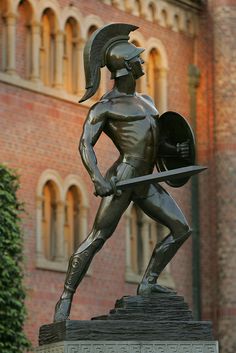
Russ Saunders, Bert Ritchey, and Rocky Kemp went on the play at USC and Saunders’s defined and muscular physique served as the model for the famed Tommy Trojan statue on the USC campus.
“Racehorse Russ” probably was the second San Diego-area player in the NFL (after Brick Muller of the 1926 L.A. Buccaneers, who were based in Chicago). Saunders was a fullback on the 1931 Green Bay Packers championship squad but forsook football and gravitated to Hollywood.
Saunders was an assistant director and production manager on more than 150 films for Warner Brothers and Burbank Studios, often working with USC teammate John Wayne. Rocky Kemp embarked on a career in high school coaching in Long Beach and Ritchey joined the San Diego police department in 1935, retiring as a detective in 1964, and then earning his degree to practice law.
QUICK KICKS
San Diego, population 145,000, was 52nd among U.S. cities but second fastest in growth to Los Angeles…San Diego was 93rd in population in the 1920 census…Glendale, which won the 1924 Southern California championship, was rudely welcomed to the ’25 season in a 42-0 loss at San Diego…Santa Ana made it a two-day trip to San Diego, overnighting Friday at the Stratford Hotel in Del Mar…Gerald (Tex) Oliver coached the San Diego B team to a 13-0 win over Huntington Park for the Southern California championship…Oliver would move on to Santa Ana in 1927, become head coach at the University of Arizona in 1933 and at Oregon in 1938…coach John Perry ordered canvas vests for Cavers runners, saying that Manual Arts players “grasped” the sweaters of Hilltop ball carriers, short circuiting 12 plays…the vests were to be tight-fitting…San Diego stayed in Fullerton the night before the game at Covina…San Diego was penalized 6 times for 100 yards, most being 15-yard holding fines, in a 7-0 win at Pasadena…Henry Ryan’s “Ryan Flying Company” became better known as Ryan Aeronautical, with offices near the Lindbergh Field airport on Harbor Drive…expected to sit on the Santa Ana bench during the game with San Diego was Stanford coach Glenn (Pop) Warner…Saints coach Charlie Winterburn played for Warner at Stanford…San Diego High students provided automobile transportation for more than 50 World War I disabled veterans from the Camp Kearny and San Diego American Legion posts…John Perry had players turn in their equipment following the loss to Covina and announced that the Hilltoppers were declining an invitation to play Phoenix Union in a postseason game….
